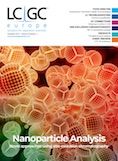Top Three HPLC Method Development Tips
LCGC Europe
An excerpt from LCGC’s professional development platform, CHROMacademy.com
An excerpt from LCGC’s professional development platform, CHROMacademy.com
The aim for any high performance liquid chromatography (HPLC) method is to achieve optimum resolution in the minimum amount of time. Such optimization will allow the best data to be gathered for the analysis, and keep running costs and analysis time low. To achieve this, chromatographers need to
be able to rapidly design methods based on an understanding of the fundamentals of HPLC. These three top tips should provide a great starting point for any method.
1. Consider Analyte Chemistry: The interaction of an analyte with the HPLC stationary and mobile phase results in retention; without this interaction, there will be no separation. Therefore, going back to some chemistry basics in regard to your analytes will govern many of the choices you make in relation to the entire HPLC method, including column selection and mobile phase design. Of particular importance is the polarity of your analytes; purely nonpolar analytes are ideal for retention and separation under reversedâphase HPLC conditions on hydrophobic stationary phases (such as C18, C8, and phenyl). Polar or ionizable analytes will require a more polar stationary phase; for example, cyano or amino, or even a different mode of chromatography such as hydrophilic interaction liquid chromatography (HILIC), normal phase, or mixed mode to achieve separation. For ionizable analytes, which can be difficult to retain under reversed-phase HPLC conditions when in their ionized form, it is essential to correctly adjust the pH of the mobile phase to render these analytes neutral-in order to obtain retention and avoid peak shape problems (such as tailing with bases). Knowledge of analyte pKa can be incredibly useful in designing a mobile phase. The mobile phase should be two pH units below or above this value (depending if the analyte is an acid or a base, respectively) to render the analyte neutral. It can be useful to screen a range of pH values and assess the effect on retention and resolution.

2. Optimize Selectivity: Of all the chromatographic parameters that govern resolution, selectivity has the greatest impact in HPLC (Figure 1). Each parameter (selectivity, resolution, efficiency) can be altered via specific method parameters, such as mobile phase composition, temperature, or column dimensions. However, column stationary phase has the biggest impact on selectivity. Therefore, the second tip for HPLC method development is to screen columns with different phase chemistries. This approach has several advantages, including quickly finding the optimum stationary phase for your separation, as well as the fact that orthogonal stationary phase chemistries may reveal underlying impurity peaks that may not have been picked up if only similar column chemistries had been tried.
Other method parameters that can be used to affect selectivity further are organic solvent, mobile phase pH, solvent additives, and temperature.
3. Use a Scouting Gradient: A scouting gradient is a linear gradient from 5–10% B to 100% B over a set time (20 min is standard). The elution strength is held at 100% B for a few minutes, to make certain that all sample components have been eluted. For reversed-phase gradient elution, water (or buffer if there are ionizable analytes) and acetonitrile are typically the eluents of choice. The use of volatile buffers (such as ammonium formate) will result in a method that is compatible with mass spectrometry for use in LC–mass spectrometry (MS).
The chromatogram obtained can reveal a lot about the mobile phase composition, column chemistry, and mode of analysis required for the separation. If compounds are eluted over more than 25% of the gradient time after the end of the gradient, then a stronger B solvent or a less retentive column is required for the analysis. Furthermore, equation 1 (where tg is the scouting gradient time) can be used to determine if an isocratic separation is possible; this is always preferred, as it increases sample throughput (no reâequilibration time) and simplifies analysis.

The mobile phase composition at which the first peak is eluted should be used as the initial mobile phase composition when developing a gradient.

New Method Explored for the Detection of CECs in Crops Irrigated with Contaminated Water
April 30th 2025This new study presents a validated QuEChERS–LC-MS/MS method for detecting eight persistent, mobile, and toxic substances in escarole, tomatoes, and tomato leaves irrigated with contaminated water.
Accelerating Monoclonal Antibody Quality Control: The Role of LC–MS in Upstream Bioprocessing
This study highlights the promising potential of LC–MS as a powerful tool for mAb quality control within the context of upstream processing.
University of Tasmania Researchers Explore Haloacetic Acid Determiniation in Water with capLC–MS
April 29th 2025Haloacetic acid detection has become important when analyzing drinking and swimming pool water. University of Tasmania researchers have begun applying capillary liquid chromatography as a means of detecting these substances.

.png&w=3840&q=75)

.png&w=3840&q=75)



.png&w=3840&q=75)



.png&w=3840&q=75)










